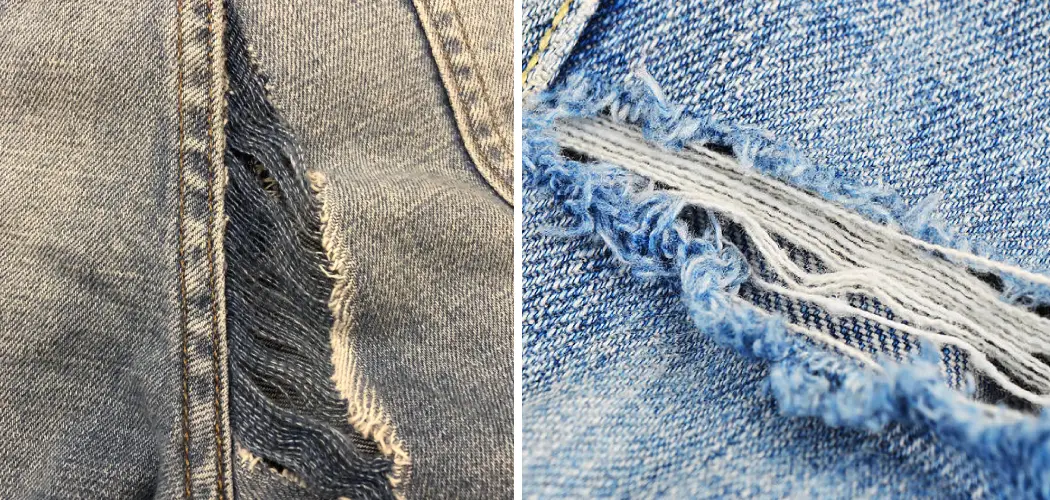Nobody wants to deal with ripped jeans, especially when the tear is right on the bum! It can be an embarrassing and frustrating situation, but fear not, as there are ways to fix those ripped jeans and give them a new lease on life. Whether it’s a small tear or a larger hole, repairing ripped jeans on the bum is a manageable task with the right techniques.
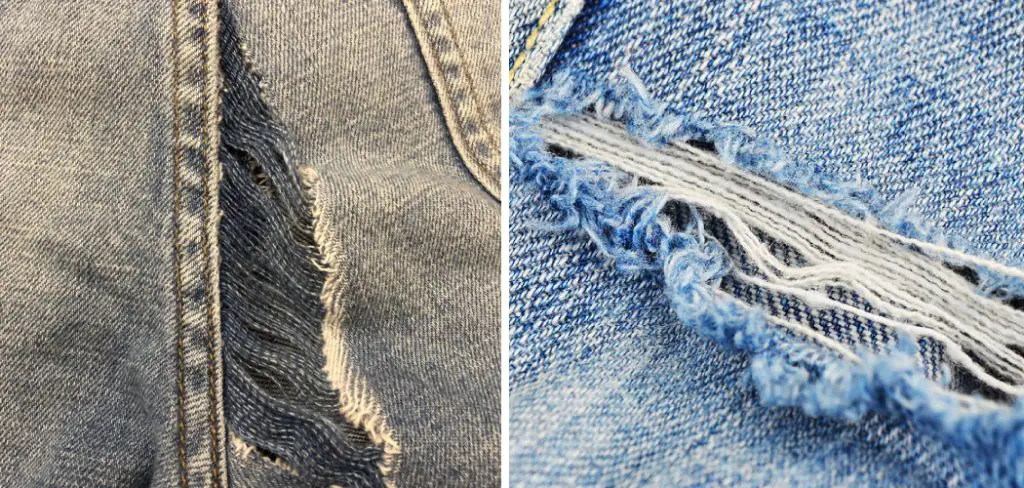
In this article, we will explore various methods to mend those torn jeans and make them wearable again. From basic sewing techniques to creative patchwork ideas, we’ve got you covered.
So, say goodbye to wardrobe malfunctions and hello to stylishly repaired jeans that will keep you looking fabulous and feeling confident. Let’s dive in and learn how to fix ripped jeans on the bum like a pro!
The Common Issue of Ripped Jeans, Particularly on the Bum Area
We’ve all been there. You’re out and about, wearing your favorite pair of jeans, when you notice that there’s a small rip on the bum area. Whether it was caused by wear and tear or simply a snag from a door handle, fixing ripped jeans can be tricky if you don’t know where to start.
But never fear! This guide will help you repair ripped jeans on the bum with ease, giving you more time to enjoy your favorite denim.
Assemble Your Materials
First things first, let’s gather our materials so we’re all set for our repair job. Here are some items that will come in handy:
- A needle and thread
- An iron and ironing board
- A pair of scissors
- Patches or fabric in a matching color
- Fabric glue (optional)
Once you have everything together, it’s time to get started. Let’s get to work!
The Importance of Fixing Ripped Jeans to Extend Their Lifespan and Prevent Further Damage
When you have a pair of jeans that has been ripped, it’s important to take the time to repair them as soon as possible. Doing so can extend their lifespan and prevent additional damage from occurring.
Fixing ripped jeans on the bum does not require much effort but should be done carefully in order to ensure a secure and lasting repair. However, it is important to note that the repair will not be permanent and may require a few touch-ups over time.
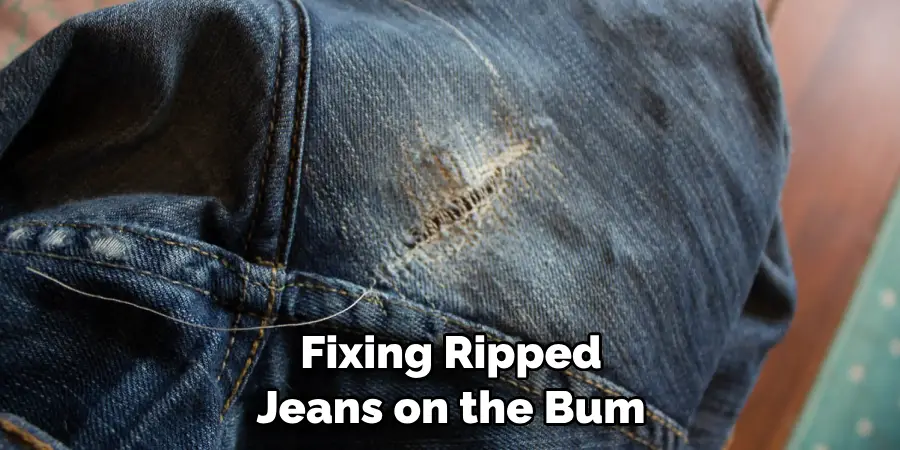
The first step in fixing ripped jeans on the bum is to turn them inside out and identify the area of damage. Next, use scissors or a sharp knife to carefully remove any loose threads or fabric around the tear. Once you have done this, place a piece of fabric or denim patch over the ripped area and secure it with pins.
After that, use a needle and thread to stitch along the edges of the fabric or denim patch. To make sure your stitches are even, you can mark the jeans with chalk and use it as a guide for stitching. Once you have finished stitching around the patch, remove any excess threads and the pins.
Finally, you will need to cover the patch with a piece of fabric or denim that matches the color of your jeans. Using an iron on medium heat, press down firmly on top of the patch and keep pressing until it adheres completely to the jeans. To finish off, use another layer of fabric or denim to cover up any visible stitching.
By following these simple steps, you can easily repair any ripped jeans on the bum and make them look good as new! With a few patches and some careful stitching, you can extend the life of your jeans and keep them looking stylish for years to come.
10 Methods How to Fix Ripped Jeans on the Bum
Method 1: Basic Hand Stitching
For small tears and fraying edges, basic hand stitching can do wonders. Start by turning the jeans inside out and aligning the torn edges. Use a needle and thread that matches the color of the denim. Employ a simple running stitch or a whip stitch to sew the edges together, ensuring a secure and neat mend.
Knot the thread tightly at the end to prevent unraveling. This method is quick and easy and works well for small, inconspicuous tears.
Method 2: Machine Stitching
For larger tears or when you need a stronger repair, using a sewing machine is ideal. Turn the jeans inside out and use a denim needle and thread. Select a sturdy stitch, such as a straight stitch or a zigzag stitch, and sew along the tear’s edges.
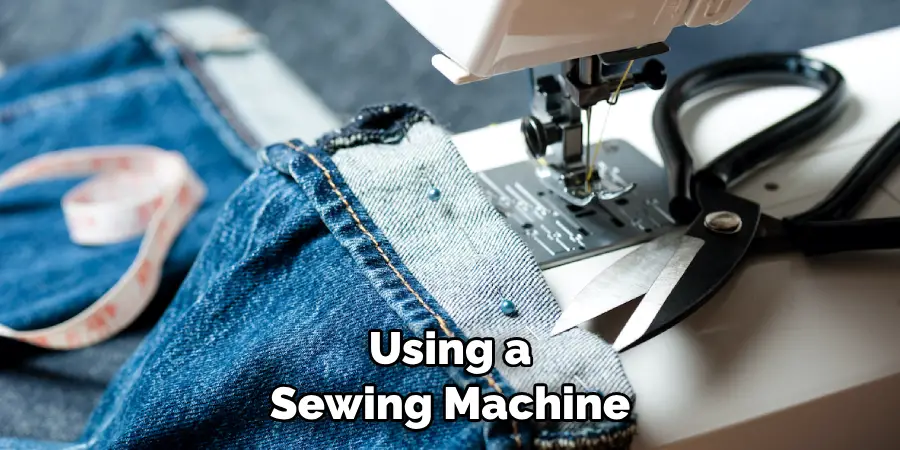
Backstitch at the beginning and end to secure the stitching. For added strength, you can sew a second row of stitches parallel to the first one. This method provides a durable and invisible repair for most ripped jeans.
Method 3: Iron-On Patches
Iron-on patches are an easy and effective way to mend ripped jeans. Choose a denim patch that matches the color and texture of your jeans. Position the patch on the inside of the tear, with the adhesive side facing the fabric.
Use an iron on the hottest setting, without steam, and press firmly on the patch for about 20-30 seconds. Allow it to cool before wearing. Iron-on patches provide a quick fix for small to medium-sized tears and add a fun, decorative element to your jeans.
Method 4: Fusible Interfacing
Fusible interfacing is a great option for repairing frayed edges on ripped jeans. Cut a piece of fusible interfacing slightly larger than the frayed area. Place it on the inside of the jeans, with the adhesive side facing the fabric. Use a hot iron to press the interfacing onto the frayed edges, adhering them together. This method stabilizes the fraying fabric and prevents it from further unraveling.
Method 5: Denim Patches with Visible Stitching
For a trendy and visible mend, consider using denim patches with contrasting stitching. Cut a denim patch that covers the entire tear with a little extra for seam allowance. Place the patch on the outside of the jeans, aligning it with the tear.
Use a contrasting thread color and a decorative stitch, such as a cross-stitch or a blanket stitch, to sew the patch in place. This method adds a unique and artistic touch to your ripped jeans.
Method 6: Sashiko Repair
Sashiko is a traditional Japanese embroidery technique that can turn a tear into a beautiful and stylish design feature. Draw a simple pattern over the rip with chalk or disappearing ink. Use a strong and contrasting thread to stitch the pattern over the tear, incorporating the edges into the design. Sashiko repair not only fixes the rip but also transforms it into an eye-catching embellishment.
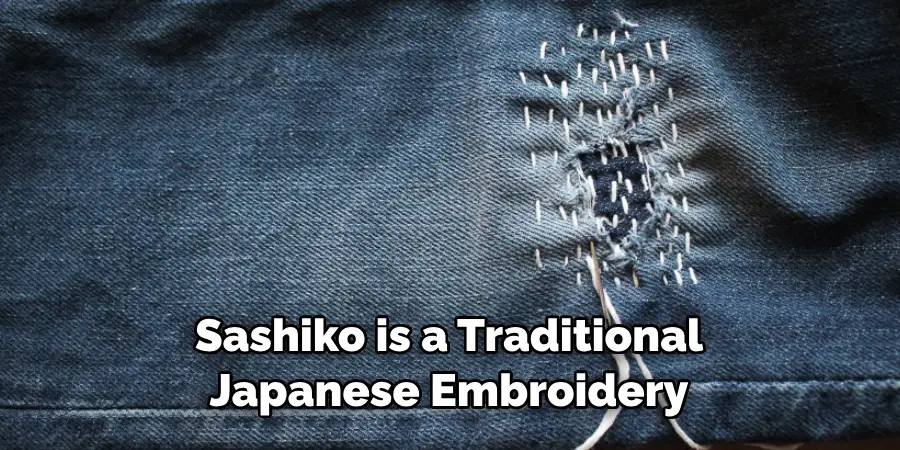
Method 7: Patchwork
Patchwork is a creative way to repair ripped jeans and turn them into a fashion statement. Cut various fabric scraps, old jeans, or patterned fabrics into shapes that cover the tear. Arrange the patches over the rip and sew them in place using a sewing machine or hand stitching. You can experiment with different patchwork designs to create a one-of-a-kind look for your jeans.
Method 8: Embroidered Patches
Embroidered patches add a pop of color and texture to your ripped jeans. Select pre-made patches or create your own by embroidering a design on fabric and cutting it into a patch shape. Place the patch over the rip and sew it in place with matching or contrasting thread. Embroidered patches not only repair the tear but also add a personalized touch to your jeans.
Method 9: Distressing and Fraying
For a stylishly distressed look, you can strategically distress and fray the denim around the tear. Use sandpaper or a pumice stone to rub the denim around the rip gently. This will create a frayed effect, blending the tear into the overall distressed appearance of the jeans. Be careful not to overdo it, as you want to maintain a balanced and intentional distressed look.
Method 10: Reverse Appliqué
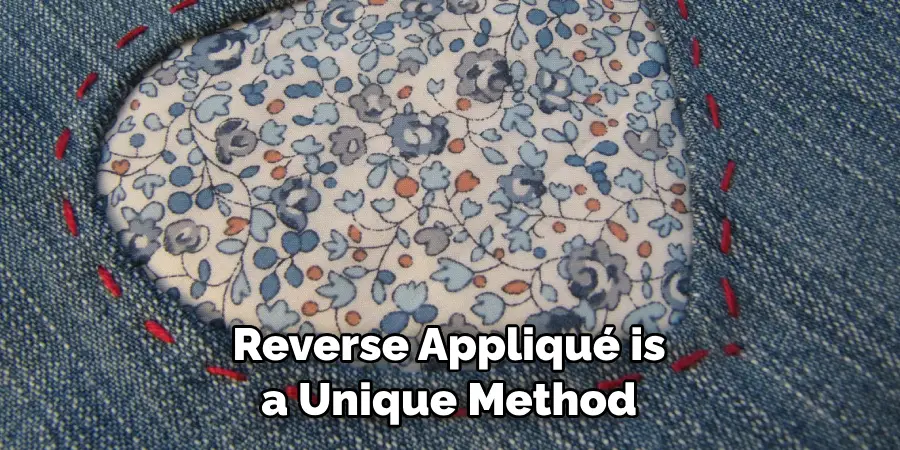
Reverse appliqué is a unique method where you layer fabric under the ripped area to create a peek-through design. Cut a piece of fabric slightly larger than the rip and place it under the hole. Align the fabric with the edges of the rip, making sure it’s visible from the front. Hand stitch around the edges of the hole, securing the fabric in place and creating a reverse appliqué effect.
Conclusion
In conclusion, ripped jeans on the bum can be easily fixed from home with common items you can find around your house. Although patching may take some practice to perfect, it is a great way to give new life to clothing that would otherwise end up in the trash.
Plus, mending clothes in this way can help reduce waste and costs as your wardrobe does not need to be freshly bought every season. Whether you choose to apply fabric glue, sew on a patch, or use iron-on patches, these tips and tricks listed in this blog post will have you rocking your fashionable ripped jeans in no time! So now that you know how to fix ripped jeans on the bum, what are you waiting for?

